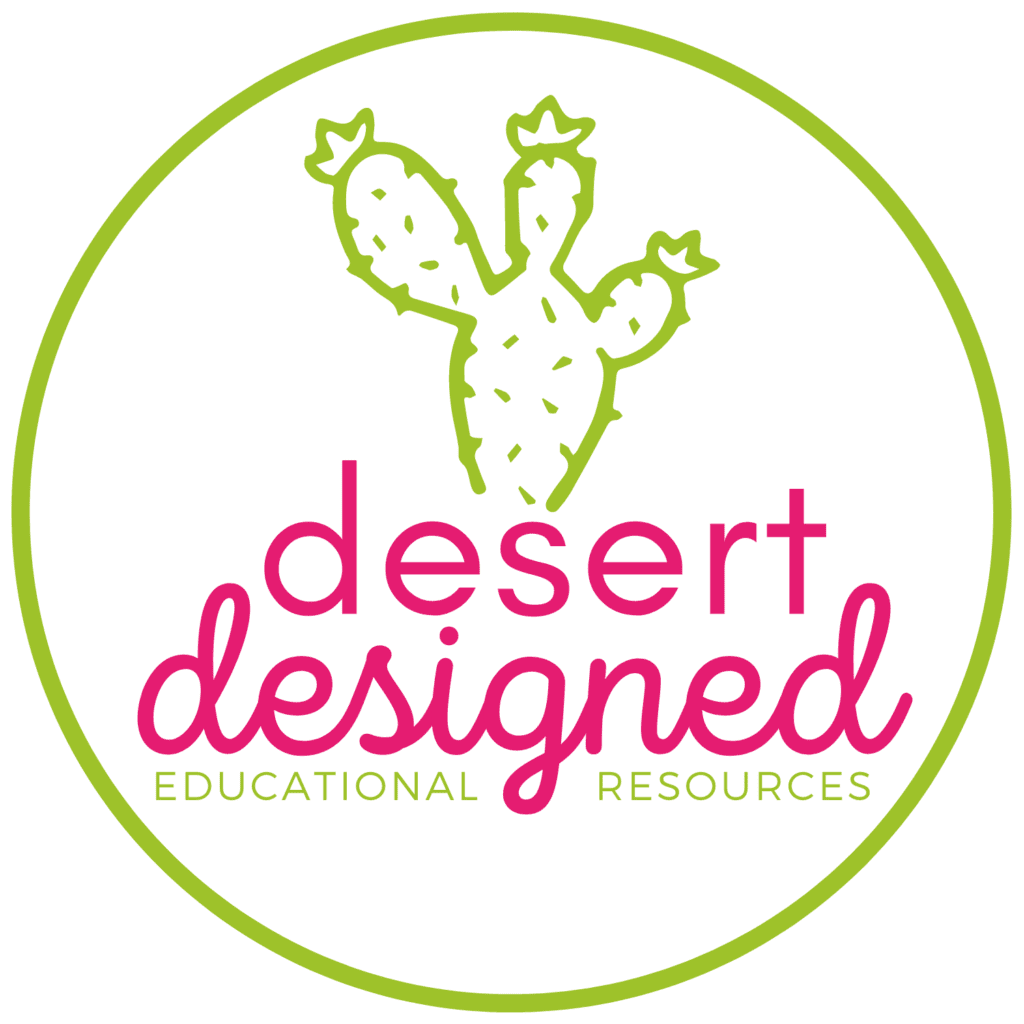When was your last long meeting or staff development day? Did you enjoy sitting in a chair for hours on end? Or even better, sitting on a bench in the cafeteria? Now, how would you feel about doing this every single day? Does this sound like a nightmare? I know it sure does to me! Have you considered that when we ask kids to sit in one spot all day long, this is what we are doing to them? Students with a kinesthetic learning style are rarer than other types of learners.
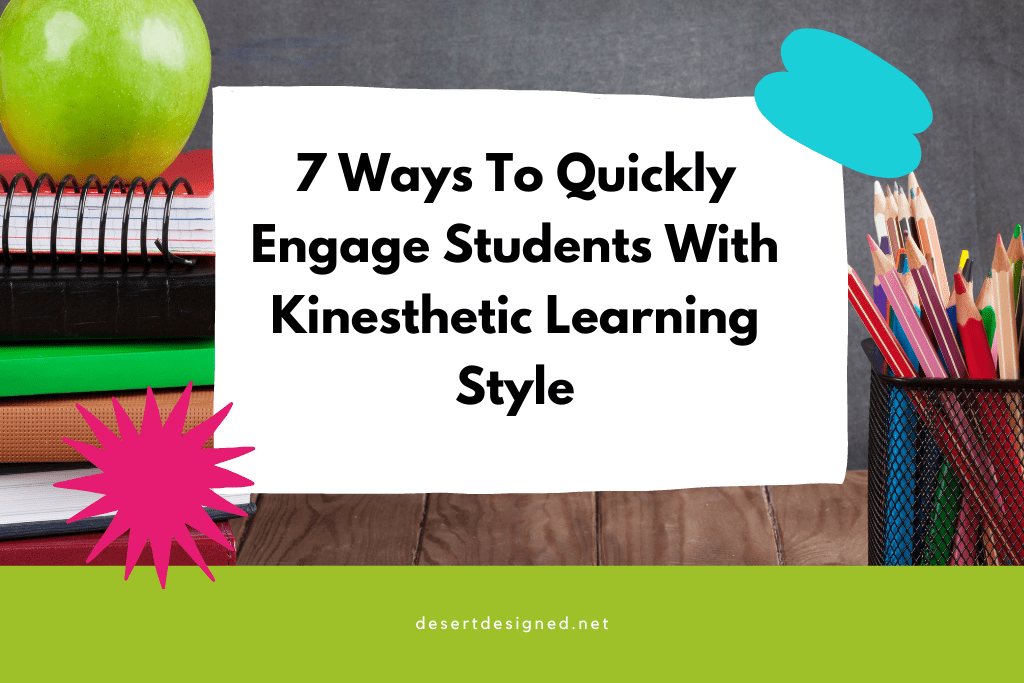
What Do I Need to Know About Kinesthetic Learning Style?
Although only about 5% of learners are estimated to be kinesthetic learners, we are here to reach all students. Also, all kids can benefit from the teaching strategies that help to engage kinesthetic learners. These strategies promote overall engagement with math lessons by keeping students physically active and creating variety.
According to Kinesthetic Strategies by VARK, people with kinesthetic learning preferences prefer these things among others:
- Doing things with others
- Moving
- Making things happen
- Hands-on approaches
- Using actions to help their understanding
Brain Breaks to Invigorate Kinesthetic Learners
Using brain breaks in the classroom has become a popular activity. When we do a brain break, we take 3-5 minutes and take a break from traditional learning. At this time, teachers can direct a movement activity such as balancing, yoga poses, and calisthenics. Another option is to use a website such a GoNoodle, Cosmic Kids, or Move to Learn. Need a break from the screen? Fit by Sanford Health has a ton of games teachers can play with their students, screen-free.
Help Students with Kinesthetic Learning Style Get Out of Their Seats
Moving during class can be seen by some teachers as a scary endeavor. You may be concerned that students will be off-task or have a difficult time staying engaged if they are not staying in their seats. In the article from the Washington Post, Letting Kids Move in Class isn’t a Break from Learning. It is Learning, Valerie Strauss addresses the importance of moving during school for not just kinesthetic learners, but for all students.
Over time, I have developed and adapted several activities to use in class with my students that promote movement in the classroom during math lessons. You will find them explained in more detail here:
Poster Problems
One way I love to incorporate movement into the classroom is to stick posters up around the room with individual math problems on each poster. Students are given post-it notes so they have one post-it for each poster.
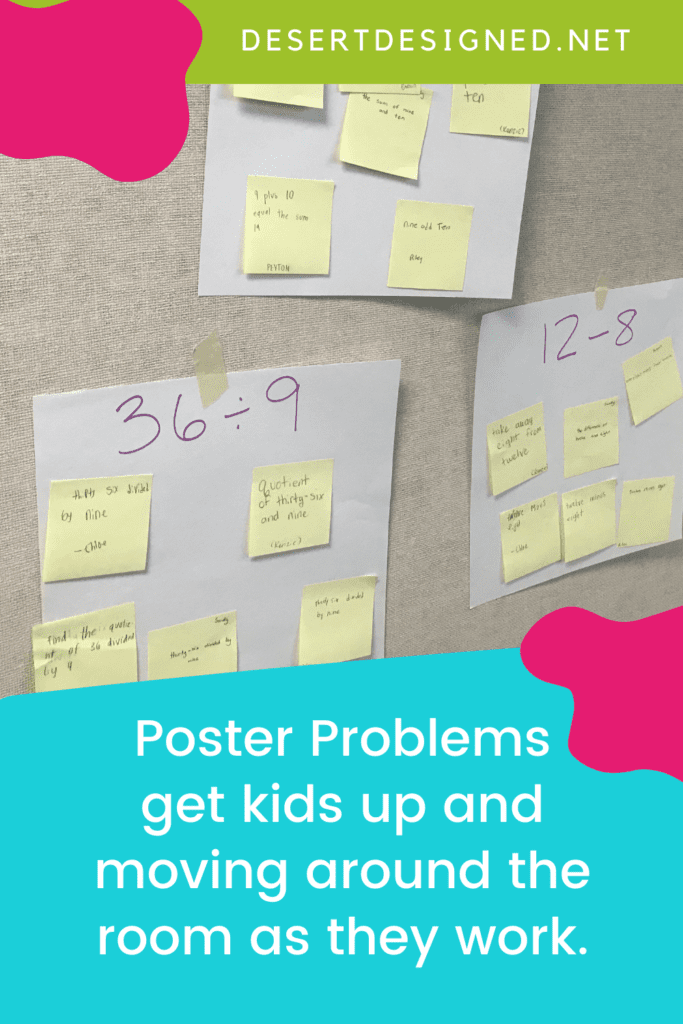
Next, students can move around the room and solve the various problems on their post-its and stick them to the correct poster. You can have students put their names on their post-its, a number, or just keep things anonymous. Students who are struggling enjoy working out the problems with a partner.
Raffle Math
Raffle Math works great with classes who tend to finish work quickly, but have difficulty with accuracy. This activity is similar to poster problems.
Post math problems in the form of task cards, posters, or even just problems written on the board with a bag or bin near each problem. Posting these around the classroom promotes movement and can help students spread out and work at their own pace.
After a set period, review the correct answer to each problem. If students have been struggling with the skill being practiced, make sure to take the time to go over HOW each math problem should have been done.
Now, the raffle begins! Pull answers out of the bin or bag for each problem until you find one that is correct. While I do this, I make sure I only read the name of students who have correct answers to minimize embarrassing students who have made errors.
This is also a great way to complete a formative assessment. If problem after problem is incorrect, you know that it is important to review HOW to do the math and possibly reteach the entire lesson in a whole new way. If each answer is correct, you know it’s time to move on to the next skill or give a summative assessment.
Prizes for the math raffle can either be pre-assigned to each bin, or you can have a prize area that raffle winners go to pick out their prizes. I like to do a wide range of prizes and prefer to stick to things my students will value or those that are free for me to pass out. Some examples are coupons for classroom rewards (homework pass, sit in a comfy chair, choose a seat for a day, etc), or items that parents have donated for prize purposes.
Scoot with Math Task Cards
Use a set of task cards to play the game Scoot with your students. This works best when the problems on the individual task cards are all similar in difficulty level.
To set up Scoot, place the task cards on desks or surfaces around the room in a pattern that will work for the flow of movement. I like using a zig-zag pattern or having students rotate around tables. It is helpful if there is a single card for every student in the room or each pair of students.
Next, each student is placed near a single card and has a recording sheet and pencil ready to go. Then, students start. You can either set a timer for how long students have to complete each card or have students use a signal to show when they have finished their current problem.
Once the majority of students are done or the timer has gone off, students will rotate to their next card.
One common problem with scoot is student anxiety and difficulty for students who may work more slowly than others. Here are some suggestions for how to combat this:
- Instead of a timer, have students move through the cards/problems at their own pace. If you plan this, you may want to have more cards than students so the kids don’t get all bunched up in a single area.
- Set up separate rotations. For example, you have three sections of your room: left, middle, and right. Students only rotate around their section. You can group the kids by your knowledge of how quickly they tend to complete the type of math problem you are practicing.
- Have students play with partners. Each partner should attempt the problem or they can help each other out and work on the problem together.
Scavenger Hunts to Promote Movement During Practice
In a scavenger hunt, students move around the room to find and answer math problems. You can hide problems around the room in unusual places such as behind the door, taped under desks and chairs, or even in the hallway. Some teachers just prefer to post all problems where students can find them easily. To complete the scavenger hunt, students will work on each problem then locate the answer on a different card. If they completed the problem correctly, they will know they are on the right path because the card they find will have the next problem or task card in order! I explain how to use task cards to create a scavenger hunt in more detail in this post.
Centers to Reach your Tactile Learners
This may seem basic, but setting up centers around your classroom for students to rotate through can provide a great opportunity for students’ movement. Sure, they aren’t getting in a workout, but they are getting the chance to get up, stretch their legs and work from a new area.
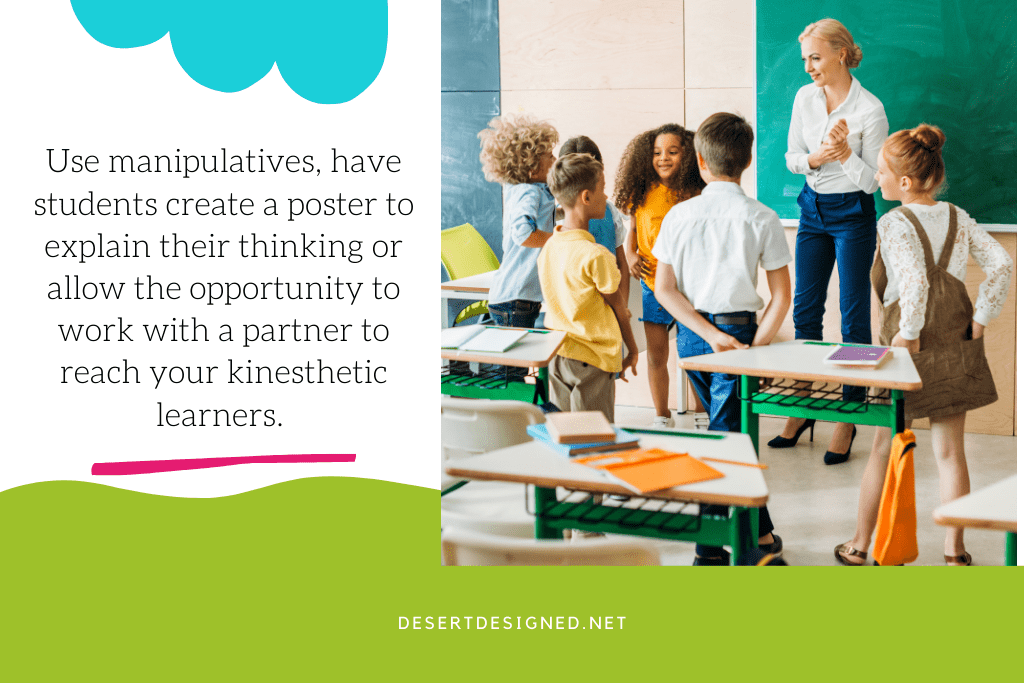
I like to set up the centers so that many of them are in locations that students don’t normally work. Some examples are around the room on the floor, at my teacher’s desk (which is a standing desk), outside under the shade of a variety of trees, or in our classroom library area. The novelty of working in a new location is enough for some students. For others, the type of activity at the center is essential, especially for your kinesthetic learners. Incorporating manipulatives, having students create a poster or project to explain their thinking, or allowing the opportunity to work with a partner are great ways to reach your students who learn with a kinesthetic learning style.
Action Vocabulary As a Kinesthetic Learning Style Strategy
Vocabulary development in math is extremely important. One way to reinforce math vocabulary is to have students create a movement to illustrate the various vocabulary terms or processes.
Every year I create a slideshow with a variety of math vocabulary terms and important math processes. Then, we work together as a class to generate hand gestures and body movements to accompany each slide. It’s always interesting to see which terms have similar gestures from one year to the next and which gestures tend to be different for each class.
Put Kinesthetic Learning Strategies Into Action
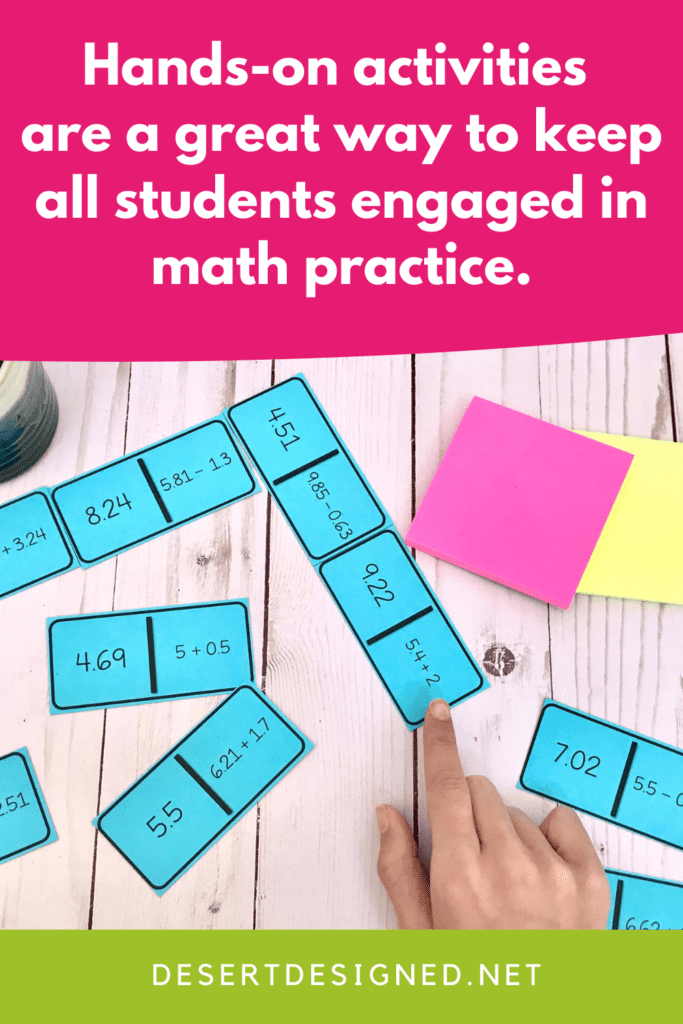
There are so many ways to incorporate movement into your classroom for all students, including those with a kinesthetic learning style. Choose a strategy and give it a try in your next lesson! I’d love to hear how it goes for you and your students! Love the tips I gave here? Be sure to join my email list for updates about my most recent blog posts, products, and free resources!

